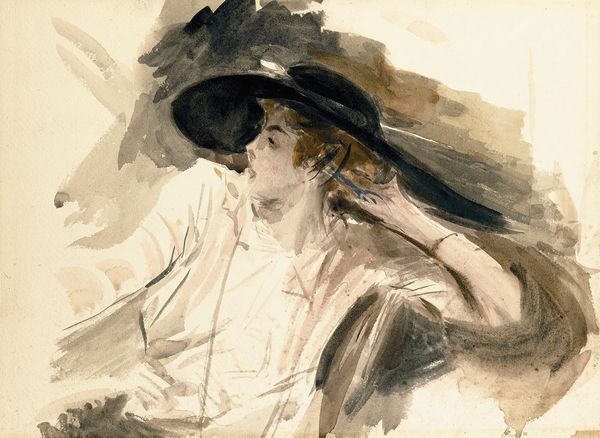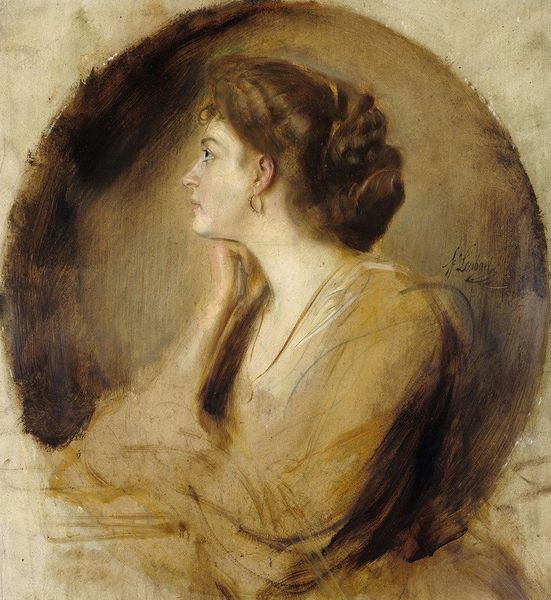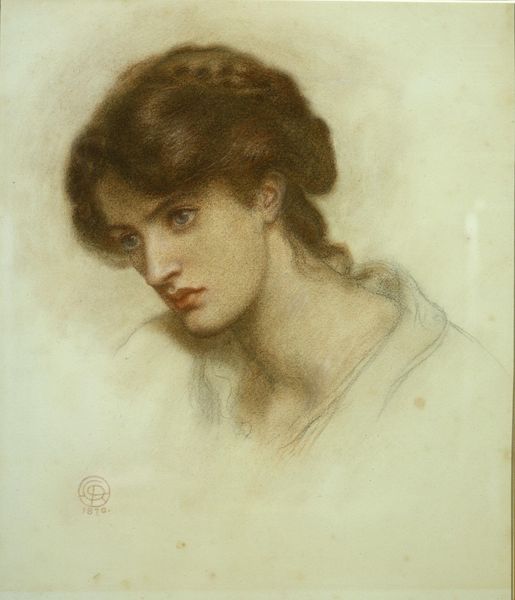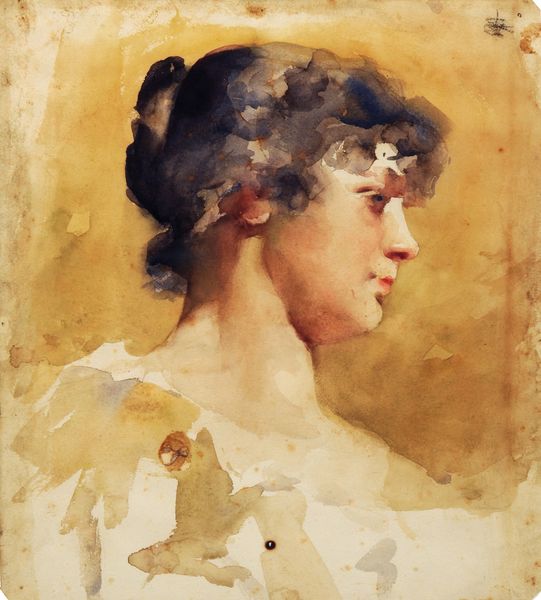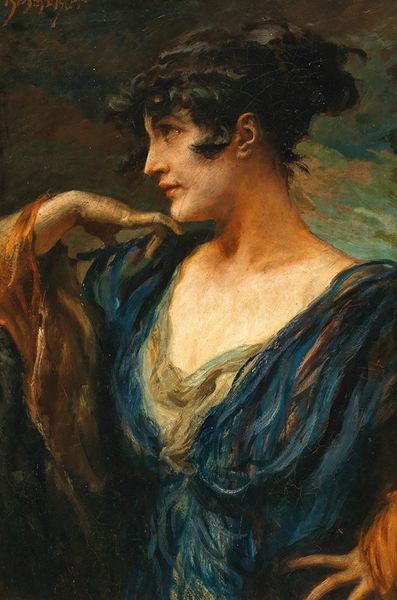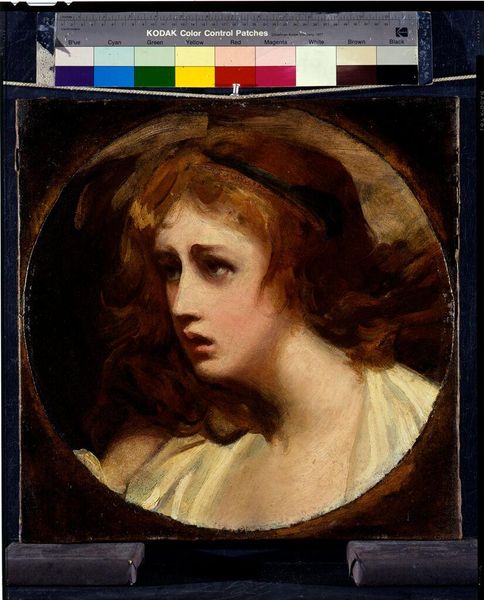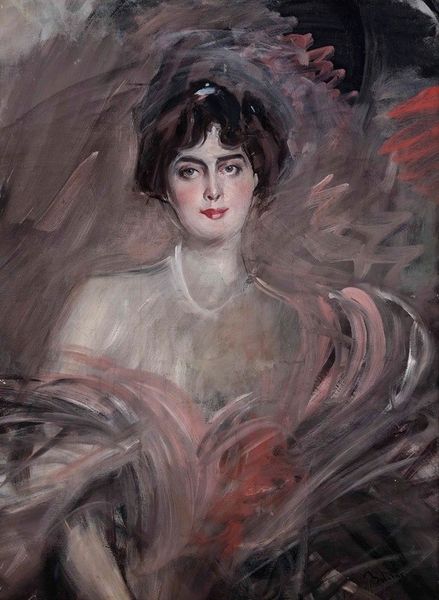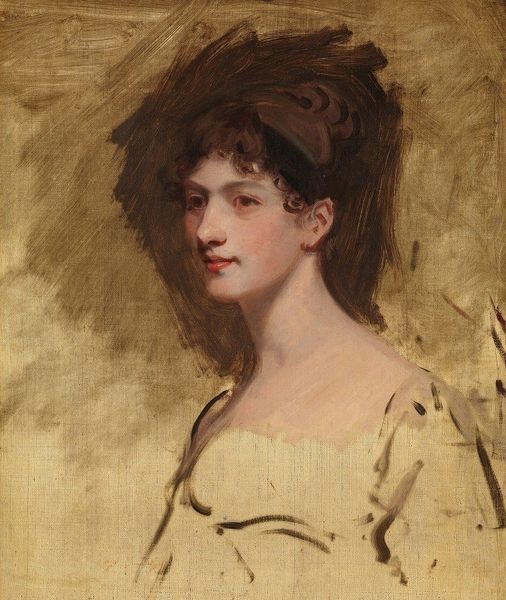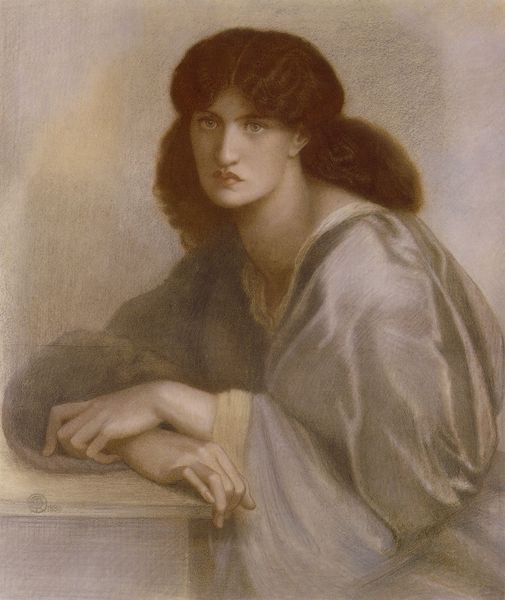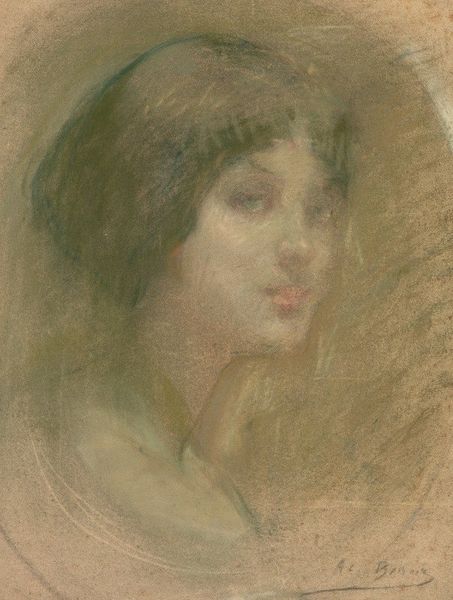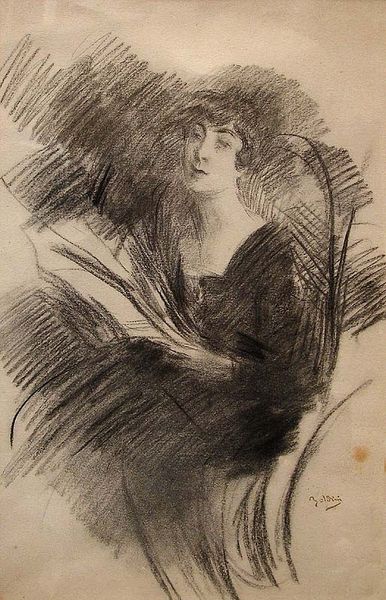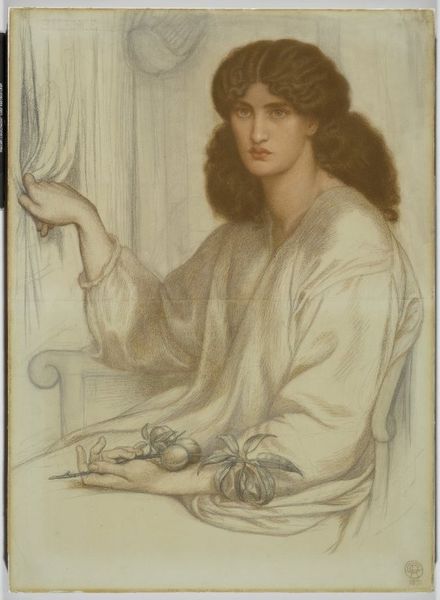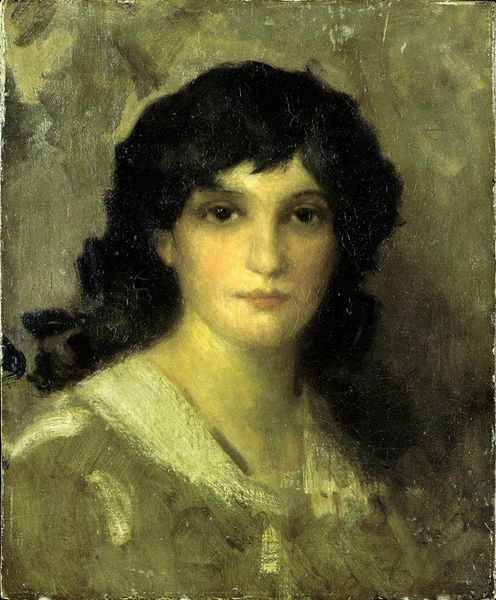
Copyright: Public domain
Editor: Here we have Giovanni Boldini’s "Portrait of Donna Franca Florio" from 1912, rendered with watercolor. The colors are so muted and soft. I find it really evocative of a bygone era of elegance. How do you interpret this work? Curator: Well, for me, it is really about how images of women became almost a sort of shorthand for particular values and aspirations in society. The image carries so much information: dress, hairstyle, posture. Each detail speaks to status and also ideal femininity during the Belle Époque. The hat itself, a dark halo framing her face, does it give the face the iconic force of a madonna? What do you think? Editor: It really does seem like the hat has that effect. I can almost see a modern take on an old master painting, somehow. Curator: Absolutely! And it makes us wonder what’s been lost from those traditions – codes, and messages once plainly displayed but are now somewhat obscure. Think, what does displaying that imagery achieve? Why was it crucial to memorialize Donna Franca in such a style? Editor: Perhaps it cemented her place within society's elite, projecting an image of power and grace? Curator: Precisely. The symbolism reinforces that idealized vision. I believe the artist successfully transformed this particular individual into an icon for their time. What have you taken away from looking at it again? Editor: I now realize how images and portraits reflect the hopes, values, and hidden beliefs of a society, beyond mere likeness. Curator: Indeed. And the memory of those societies.
Comments
No comments
Be the first to comment and join the conversation on the ultimate creative platform.
